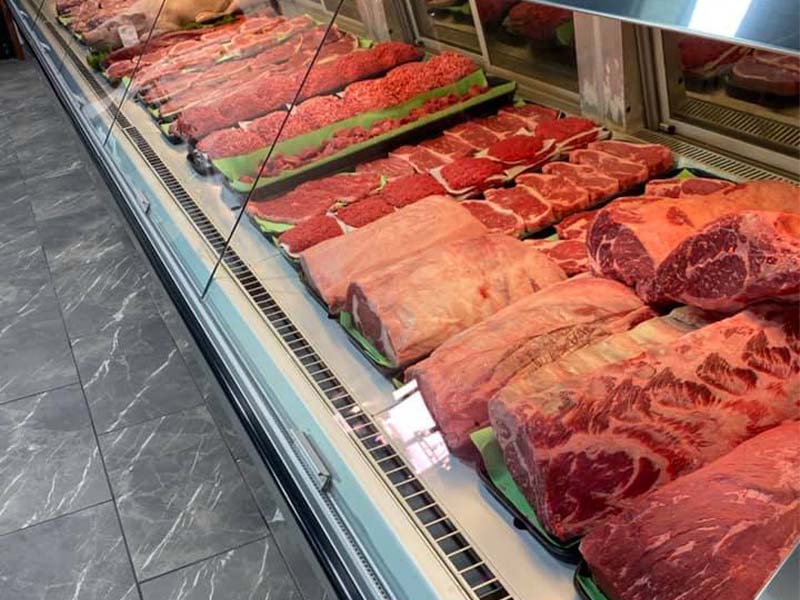Discover Fresh Cuts at Bagley Farms Meat Market Edwardsville IL for Your Next BBQ
Discover Fresh Cuts at Bagley Farms Meat Market Edwardsville IL for Your Next BBQ
Blog Article
Discover the Art of the Butcher's Cut in a Modern Meat Market
In the ever-evolving landscape of contemporary meat markets, the butcher's cut has actually transcended its conventional origins, merging old-time craftsmanship with modern methods. What genuinely sets the modern butcher apart is their capability to create a much deeper connection between consumers and the origins of their meat.
Development of Butchery Techniques
The development of butchery methods shows an abundant tapestry of technology and adaptation driven by innovations in technology, changes in customer demand, and a much deeper understanding of meat scientific research. Historically, butchery was a craft passed down through generations, with approaches developed over centuries to make the most of return and taste. The commercial revolution ushered in mechanization, transforming standard techniques and enabling large processing.
The mid-20th century saw butchery strategies even more fine-tuned by scientific understandings right into muscle biology and meat aging, improving both inflammation and preference. Innovations like vacuum product packaging and refrigeration expanded item shelf-life, enabling butchers to diversify offerings and boost high quality control. This period also marked the increase of specific tools, such as band saws and meat slicers, which increased accuracy and efficiency in meat handling.

The 21st century has actually presented electronic modern technology right into the butchery realm. Digital systems now assist in tracking animal provenance and maximizing cuts to satisfy details client choices. Furthermore, a resurgence in artisanal butchery has actually arised, blending typical skills with modern expertise to accommodate customers seeking ethical and lasting meat options. This development emphasizes a vibrant interplay in between practice and development, conference contemporary demands while maintaining the craft's heritage.
Comprehending Meat Cuts
Understanding the complexities of meat cuts is important for both butchers and customers looking for high quality and value. For butchers, precise cuts show ability and regard for the craft, making certain minimal waste and ideal return.

Recognizing muscle mass make-up is crucial; muscular tissues utilized a lot more often by the pet have a tendency to be harder and are best suited for slow food preparation methods, while less-used muscular tissues, like those found in the loin, are much more tender and perfect for barbecuing or roasting. Knowledge with these distinctions encourages customers to make image source educated options, boosting their cooking ventures.
Selecting Quality Meat
Picking the best meat includes greater than simply selecting a visually enticing item from the display screen. bagley farms meat market edwardsville il. The art of selecting top quality meat calls for a critical eye and knowledge of specific attributes that symbolize freshness and quality. Pay focus to click to find out more the color; beef must have a bright, cherry-red tone, while lamb should show a soft pink tone, and pork a light pink. This suggests the meat is fresh and hasn't been exposed to oxygen for also long.
Second of all, think about the marbling, which refers to the white flecks of fat within the muscular tissue. Proper marbling is an essential sign of tenderness and taste, as it melts during food preparation, improving the meat's juiciness. Bear in mind, greater marbling commonly associates with superior high quality cuts, such as USDA Prime.
Texture is one more essential aspect; meat should feel strong to the touch, not slimy or excessively soft. Furthermore, bear in mind the aroma. Fresh meat needs to have a clean, neutral scent, without any kind of sour or off-putting odors.
Combining Cuts With Cooking Methods

Conversely, tougher cuts like brisket and chuck roast are rich in collagen, which breaks down right into gelatin this post when prepared slowly. These cuts are ideal for braising or slow-moving roasting, allowing the meat to soften with time and establish deep, intricate tastes. Cuts such as short ribs and pork shoulder make out well with slow-cooking approaches, where expanded cooking times transform their durable textures into succulent recipes.
Lamb shanks and oxtail, which call for long term food preparation to soften, are perfect candidates for stewing or slow simmering. These methods coax out rich, hearty tastes while keeping moisture. By recognizing the special features of each cut, cooks and home cooks alike can boost their cooking creations, making sure each meal is both pleasing and unforgettable.
The Butcher's Duty Today
Navigating the advancing landscape of the modern-day meat market, the butcher's role today prolongs past mere preparation of cuts. Contemporary butchers are culinary craftsmens, instructors, and advocates for lasting practices.
Along with crafting specific cuts, butchers now involve directly with clients, supplying cooking guidance and tailoring selections to suit specific needs and choices. Their experience in meat aging, marbling, and flavor profiles encourages consumers to make informed choices, improving their culinary experiences. This individualized service exhibits the butcher's developing role as a relied on consultant in the cooking area.
Additionally, butchers are critical in lessening waste, utilizing entire pets to create diverse products such as sausages and stocks. This detailed strategy not only values the animal yet also lines up with modern sustainability goals. In this way, the modern-day butcher personifies both practice and technology, adjusting to an ever-changing market while maintaining the virtuosity and stability of their craft.
Final Thought
Mastery in comprehending varied meat cuts and quality indicators empowers butchers to give enlightened suggestions, straightening specific cuts with optimal cooking methods. By recognizing historical methods while accepting contemporary demands, the butcher's duty remains crucial in today's sophisticated meat market.
Report this page